Se i tuoi video subacquei risultano spesso tremolanti o lenti, uno sea scooter può fare una grande differenza. Ti aiuta a scivolare con fluidità, rendendo molto più facile filmare riprese stabili e dall'aspetto professionale. Questa guida ti mostrerà come usarlo per migliorare il tuo filmmaking, così potrai catturare riprese migliori nella tua prossima immersione.
Come Scegliere il Tuo Sea Scooter e l'Attrezzatura Fotografica
Vantaggi Chiave dell'Uso di uno Sea Scooter per le Riprese
Uno sea scooter è più di un semplice modo per muoversi; è uno strumento potente per il filmmaking che risolve molte sfide comuni dei video subacquei.
Riprese Fluide e Stabili
La propulsione costante di uno sea scooter crea una piattaforma di ripresa incredibilmente stabile, agendo come un dolly mobile. Questo elimina il movimento a scatti, su e giù, che spesso deriva dal calcio con le pinne, permettendoti di ottenere il tipo di riprese fluide e di inseguimento che vedi nei film professionali.
Maggiore Distanza di Tiro
Con uno sea scooter, puoi coprire senza sforzo grandi aree come un intero relitto o una lunga barriera corallina in un'unica immersione. Questo aumenta notevolmente le tue opportunità di trovare soggetti unici e catturare una gamma diversificata di riprese per raccontare una storia più completa.
Movimento creativo della fotocamera
Gli sea scooter sbloccano movimenti dinamici della fotocamera quasi impossibili da eseguire per un nuotatore. Puoi girare dolcemente intorno a un soggetto fermo per una ripresa "orbitale" a 360 gradi, o eseguire una risalita controllata per creare una rivelazione drammatica di un paesaggio subacqueo.
Risparmio di energia e aria
Lasciando che lo sea scooter faccia il lavoro fisico, risparmi molta energia e aria. Questo non solo permette immersioni più lunghe, ma libera anche la tua capacità mentale per concentrarti completamente sugli aspetti creativi della ripresa—come composizione, messa a fuoco ed esposizione.
Come scegliere lo sea scooter giusto per le riprese
Uno sea scooter per le riprese deve essere uno strumento affidabile che ti dia controllo creativo. Ecco cosa cercare.
Cerca velocità variabile e una batteria a lunga durata
Il controllo della velocità variabile è essenziale. Ti servirà una velocità lenta per riprese deliberate e una più veloce per seguire la vita marina o gestire le correnti. È fondamentale verificare il tempo di funzionamento continuo dello scooter a ogni velocità per assicurarti che la batteria duri per tutta l'immersione.
Scegli un modello facile da maneggiare e trasportare
Cerca uno scooter con galleggiabilità neutra o leggermente positiva, così è facile da maneggiare e non affonda se lo lasci andare. Un modello ben bilanciato è fondamentale per ottenere riprese precise. Se viaggi, uno scooter più leggero con batterie rimovibili conformi alle normative aeree è molto più comodo.
Assicurati che abbia buone opzioni di montaggio per la fotocamera
Uno scooter per le riprese deve avere almeno un attacco standard per una action camera. I modelli migliori offrono maggiore flessibilità, come punti di fissaggio extra o superfici piane per montare vassoi personalizzati che possono contenere fotocamere e luci più grandi.
Come costruire il tuo sistema di ripresa subacquea
La tua attrezzatura fotografica deve essere configurata per funzionare perfettamente con te e il tuo sea scooter.
Inizia scegliendo la fotocamera giusta
La scelta della tua fotocamera dipende dai tuoi obiettivi e dal budget.
· Action Cameras (GoPro): Il punto di partenza più semplice e duraturo.
· Fotocamere Compatte (Olympus TG): Un buon miglioramento in qualità d'immagine e controllo.
· Mirrorless/DSLR in Custodia: La scelta professionale per la migliore qualità d'immagine, ma questa configurazione è ingombrante, complessa e costosa.
Raggiungi il Galleggiamento Neutro e l'Equilibrio
L'obiettivo è rendere l'intero supporto (camera, vassoio, luci) a galleggiamento neutro in modo che sembri senza peso. Ci riesci attaccando bracci di galleggiamento e galleggianti in schiuma al vassoio della camera per compensare il peso. Un supporto bilanciato è stabile e facile da guidare, essenziale per riprese fluide.
Aggiungi Luci Video Essenziali
Le luci video sono obbligatorie per ripristinare i colori persi sott'acqua. Poiché l'acqua assorbe i rossi e i gialli, hai bisogno di luci per evitare riprese blu o verdi. Usa due luci video a fascio largo montate su bracci ai lati della tua camera per un'illuminazione uniforme e per eliminare ombre dure.
Completa il Supporto con Accessori Chiave
· Vassoio per Camera: La base che sostiene la tua camera e fornisce punti di montaggio per maniglie e bracci.
· Bracci Articolati: Bracci flessibili usati per posizionare le luci o un monitor esterno.
· Monitor Subacqueo: Uno schermo separato e più grande che rende molto più facile confermare la messa a fuoco e inquadrare le riprese con precisione.
Il tuo sea scooter e il supporto per la camera sono i tuoi strumenti principali per raccontare storie sott'acqua. Una volta selezionato e assemblato il sistema giusto, sarai pronto a concentrarti sulla parte più importante: le tecniche creative per catturare immagini straordinarie.

Tecniche di Ripresa con il Tuo Sea Scooter
Ora che la tua attrezzatura è pronta, è il momento di filmare. Questa sezione copre le tecniche più importanti per il movimento della camera, l'inquadratura e l'illuminazione per aiutarti a ottenere riprese dall'aspetto professionale.
Inquadrature Essenziali con lo Sea Scooter
Padroneggiare alcuni movimenti base della camera migliorerà drasticamente i tuoi video. Ecco le inquadrature più efficaci che puoi ottenere con uno sea scooter.
1. Ripresa Dolly
Questo è un movimento laterale fluido parallelo a un soggetto, o un movimento dritto verso o lontano da esso.
Come farlo: Usa la velocità più lenta del tuo scooter per muoverti accanto al soggetto a distanza costante. Puoi anche muoverti lentamente verso un soggetto (un "push-in") per attirare l'attenzione dello spettatore.
2. Ripresa Orbitale
Questo comporta girare intorno a un soggetto fermo per mostrarlo da tutti i lati.
Come farlo: Gira intorno al tuo soggetto mantenendo la stessa distanza. Punta lo scooter leggermente lontano dal soggetto e usa il corpo per sterzare in un arco fluido. Questa ripresa è ottima per mostrare un punto di interesse, come una testa di corallo o un'ancora su un relitto.
3. Seguire e Fly-Through
Queste riprese creano un senso immersivo di viaggio seguendo un animale o muovendosi attraverso una struttura.
Come farlo: Per seguire un animale, abbina la sua velocità e cerca di anticiparne i movimenti senza stressarlo. Per un fly-through, come passare attraverso un'apertura di un relitto, pianifica il percorso in anticipo e muoviti con fluidità.
4. Salire e Scendere
Usare il movimento verticale può far sembrare una scena enorme e drammatica.
Come farlo: Usa lo scooter per mantenere una velocità verticale controllata e costante. Una lenta ascesa su un relitto alto o una discesa in un blue hole può essere molto potente. Assicurati sempre di equalizzare le orecchie.
5. Ripresa Point-of-View (POV)
Questo offre una prospettiva in prima persona, facendo sentire lo spettatore come se fosse nel viaggio.
Come farlo: Monta una action camera direttamente sul supporto integrato del tuo scooter. Questo è ottimo per creare sequenze veloci e dinamiche.
6. Combinare i Movimenti
Una volta che ti senti a tuo agio con le riprese di base, puoi combinarle per risultati più complessi e interessanti.
Come farlo: Prova a girare intorno a un soggetto mentre sali lentamente per creare un effetto a spirale. Oppure, passa oltre un oggetto in primo piano e poi inclina la tua camera verso l'alto per rivelare una scena più ampia dietro di esso.
Come inquadrare le tue riprese
Un sea scooter ti dà la libertà di trovare rapidamente la migliore posizione e inquadratura per la fotocamera.
1. Crea profondità con i livelli
Per evitare che il video appaia piatto, inquadra le riprese con elementi in primo piano, piano medio e sfondo.
Come farlo: Usa il tuo scooter per posizionarti facilmente dove puoi inquadrare la tua ripresa con più livelli. Metti un oggetto in primo piano (come un corallo), il soggetto principale al centro e l'acqua aperta sullo sfondo per creare un senso di profondità.
2. Usa linee guida
Usa le linee naturali nell'ambiente per guidare lo sguardo dello spettatore.
Come farlo: Trova una linea, come il bordo di una barriera corallina o una ringhiera su un relitto, e usa il tuo scooter per seguirla con fluidità. Questo crea un percorso visivo naturale e rende la tua inquadratura più coinvolgente.
3. Applica la regola dei terzi
Posizionare il soggetto fuori centro di solito crea un'inquadratura più equilibrata e visivamente piacevole.
Come farlo: Immagina una griglia 3x3 sullo schermo. Usa il tuo scooter per regolare facilmente la posizione in modo che il soggetto principale si trovi su una delle linee o intersezioni della griglia.
Come ottenere una buona luce e colore
Una buona illuminazione è la chiave per catturare i colori vibranti del mondo sottomarino.
1. Combina luce naturale e artificiale
Bilancia la luce solare dall'alto con le tue luci video per risultati dall'aspetto più naturale.
Come farlo: Tieni il sole alle tue spalle per illuminare l'intera scena. Usa le tue luci video per illuminare il soggetto principale in primo piano. Questo dona colore al soggetto senza far sembrare lo sfondo scuro e artificiale.
2. Posiziona le luci per evitare il Backscatter
Backscatter è l'effetto particellare dall'aspetto nevoso causato dalle tue luci.
Come farlo: Monta le tue luci su bracci lunghi, alti e larghi, lontano dall'obiettivo della tua fotocamera. Questo illumina il soggetto lateralmente e impedisce che le particelle direttamente davanti alla tua fotocamera vengano illuminate.
3. Imposta un bilanciamento del bianco manuale
Devi dire alla tua camera come appare il "bianco" sott'acqua per ottenere colori corretti.
Come farlo: Alla profondità di ripresa, punta la tua camera su una tavoletta bianca e usa la funzione di bilanciamento del bianco personalizzato della tua camera. Se cambi profondità, dovrai rifarlo.
Come filmare diversi scenari subacquei
Applicare le tue abilità a situazioni reali è il passo successivo. Questo capitolo esplora come filmare specifici scenari subacquei, dagli incontri con la fauna a riprese artistiche.
Filma la fauna marina
Quando filmi gli animali, il tuo obiettivo principale è catturare comportamenti naturali senza disturbarli. Uno sea scooter può aiutarti a farlo efficacemente se usato con rispetto.
1. Avvicinati alla fauna in modo sicuro e paziente
Per catturare comportamenti autentici, devi essere un osservatore passivo, non un inseguitore. Non inseguire mai un animale. Avvicinati lentamente di lato usando la velocità più bassa dello scooter. Per un incontro ravvicinato e non invasivo, puoi spegnere il motore quando sei vicino e semplicemente lasciarti trasportare per l'ultimo tratto. Un approccio calmo e rispettoso è la chiave per ottenere ottime riprese di fauna selvatica.
2. Usa lo Scooter per riprese di inseguimento a lunga distanza
Uno sea scooter è lo strumento perfetto per tenere il passo con animali che si muovono lentamente come tartarughe marine, razze o grandi squali. Usando una velocità lenta e costante per muoverti parallelamente all'animale, puoi catturare lunghe riprese stabili di inseguimento senza stancarti, cosa quasi impossibile da fare nuotando con le pinne.
Esplora barriere coralline e relitti
Barriere coralline e relitti sono ambienti enormi. Il tuo scooter è la chiave per catturarne la scala e i dettagli.
1. Mostrare la scala di un paesaggio
Per trasmettere la grandezza di una barriera corallina o di un relitto, usa il tuo scooter per creare ampi movimenti fluidi. Una ripresa lenta "fly-over" a pochi metri sopra una barriera può mostrare quanto sia vasta, mentre una ripresa dolly fluida lungo una parete profonda o il lato di un grande relitto rivela la sua lunghezza e complessità.
2. Riprese all'interno dei relitti
Nota: Prova solo se hai la formazione e certificazione adeguata per la penetrazione nei relittiAll'interno di un relitto, uno scooter permette movimenti precisi e stabili senza sollevare limo, che può rovinare la visibilità. Puoi creare un potente senso di mistero e esplorazione eseguendo riprese lente e costanti in avanti lungo corridoi bui o attraverso aperture.
Filmare Persone Sott'acqua
Uno sea scooter ti permette di filmare altri subacquei da una prospettiva unica e stabile.
1. Documentare le Interazioni dei Subacquei
Il tuo ruolo è essere un narratore obiettivo. Lo scooter ti aiuta a mantenere una posizione stabile a distanza, catturando sia il subacqueo che l'ambiente. Usa una ripresa orbitale per inquadrare efficacemente un subacqueo e la vita marina che sta osservando..
2. Riprese di Freediver e Modelli
Uno scooter è indispensabile per seguire il ritmo veloce dei freediver o i movimenti aggraziati dei modelli. Durante le immersioni con bombole, puoi facilmente seguire l'intera discesa o risalita di un freediver in un'unica ripresa continua. Per i modelli, lo scooter fornisce il movimento fluido necessario per un lavoro di camera liscio e ampio.
Filmare per Effetto Artistico
A volte l'obiettivo non è solo documentare un soggetto, ma catturare la bellezza del movimento e il passare del tempo.
1. Riprese ad Alto Frame Rate (Slow-Motion)
Una bella slow-motion richiede di girare a un alto frame rate (es. 120 fps) e di avere un movimento della fotocamera perfettamente fluido. Il tuo scooter fornisce questa stabilità. Trova un soggetto con un movimento dolce, come un corallo che ondeggia, e esegui una ripresa dolly lenta e costante. Il filmato risultante sarà ipnotico se rallentato nel montaggio.
2. Time-Lapse Subacqueo
Un time-lapse comprime un lungo periodo di tempo e richiede che la fotocamera sia fissata su un treppiede. Per questa ripresa, il ruolo dello scooter è puramente logistico, non per filmare. Usalo per trasportare il tuo pesante treppiede e l'attrezzatura fotografica in luoghi remoti troppo difficili da raggiungere a nuoto.

Come Terminare il tuo Video Subacqueo
Le riprese sono solo metà della battaglia. In post-produzione, organizzerai le clip raw, costruirai una storia, correggerai il colore, aggiungerai il suono e preparerai il video finale per il mondo.
1. Organizza il tuo Materiale
Inizia organizzando le tue clip in una struttura di cartelle chiara su un disco esterno veloce (SSD) per gestire i grandi file video. Poi, rivedi il materiale per selezionare solo le riprese migliori. Un buon flusso di lavoro è fare una prima passata veloce per trovare tutte le clip utilizzabili, seguita da una seconda passata più critica per scegliere solo i momenti più forti per il montaggio finale.
2. Monta la tua Storia
Assembla le clip scelte in una storia semplice con un inizio (una ripresa ampia di apertura), un centro (i tuoi soggetti principali) e una fine (una ripresa conclusiva). Mantieni l'attenzione dello spettatore variando il ritmo—mix le tue riprese veloci con lo scooter con quelle lente e aggraziate, e usa il rallentatore per un effetto drammatico. Per un aspetto più professionale, attieniti a tagli semplici e puliti tra le riprese.
3. Correzione e Grading del Colore
Questo è il passaggio più critico per il video subacqueo. Per prima cosa, esegui una correzione tecnica del colore per rimuovere la dominante blu/verde e ripristinare i colori naturali regolando il bilanciamento del bianco e aggiungendo i rossi. Dopo che il filmato appare naturale, puoi applicare una color grading creativa per conferirgli uno stile o un'atmosfera specifica. Un tocco finale di nitidezza e riduzione del rumore può anche aiutare a pulire l'immagine.
4. Progettare il suono
Il suono dà vita alle tue riprese subacquee silenziose. Scegli una musica di sottofondo che corrisponda all'umore e al ritmo del tuo montaggio. Poi, aggiungi effetti sonori sottili come bolle di sub o suoni marini lievi per rendere la scena più immersiva e realistica.
5. Condivisione e promozione del tuo video
Per condividere il tuo film, esportalo in un formato comune come MP4, usando le impostazioni consigliate per piattaforme come YouTube, Instagram o Sublue Go. Attira gli spettatori con una miniatura accattivante e colorata e un titolo chiaro. Infine, aiuta le persone a trovare il tuo video usando parole chiave specifiche e tag che descrivono la tua posizione, i soggetti e l'attrezzatura che hai usato.
Crea il tuo film subacqueo!
Questa guida ha dimostrato che un sea scooter è uno strumento chiave per il filmmaking per creare riprese stabili, dinamiche e professionali. Ora hai le conoscenze per selezionare l'attrezzatura giusta, eseguire movimenti cinematografici e rifinire il tuo lavoro in post-produzione. Il mondo sottomarino è pieno di storie incredibili, e con queste abilità sei completamente equipaggiato per catturarle. È tempo di mettere in pratica ciò che hai imparato e dare vita alla tua visione unica dell'oceano.
Domande frequenti sulla videografia con Sea Scooter
D1: È difficile usare una fotocamera e un sea scooter contemporaneamente?
Ci vuole un po' di pratica, quindi è meglio iniziare in un'area calma e poco profonda per prendere confidenza. La chiave è rendere il tuo equipaggiamento per la fotocamera il più possibile a galleggiamento neutro così è facile da maneggiare. Usare un modello di sea scooter che permette l'uso con una mano può fare una grande differenza, poiché libera l'altra mano per regolare le impostazioni della fotocamera.
D2: Le mie riprese sono ancora mosse. Quali sono gli errori più comuni?
Le riprese mosse sono solitamente causate da due cose: combattere contro lo scooter o un equipaggiamento sbilanciato. Invece di stringere lo scooter con forza, rilassati e guidalo delicatamente. La cosa più importante è assicurarti che il tuo equipaggiamento per la fotocamera sia a galleggiamento neutro. Se cerca costantemente di affondare o galleggiare, dovrai combatterlo, il che introduce instabilità nelle tue riprese.
D3: Quanto è troppo vicino quando si filma la vita marina con uno scooter?
La regola d'oro è di non alterare mai il comportamento naturale di un animale. Se l'animale cambia il suo schema di nuoto, smette di nutrirsi o fugge, sei troppo vicino. Avvicinati sempre alla fauna lentamente e di lato, non frontalmente. Per essere meno invasivo, puoi spegnere il motore dello scooter quando sei vicino e semplicemente lasciarti trasportare per l'ultimo tratto.
D4: Devo spendere i miei soldi prima per un sea scooter migliore o per una fotocamera migliore?
Per i principianti, un buon sea scooter spesso migliora immediatamente i tuoi video più di una nuova fotocamera. Una fotocamera base come una GoPro su una piattaforma stabile e in movimento fluido produrrà riprese migliori rispetto a una fotocamera costosa che è instabile e difficile da mantenere ferma mentre si nuota. Prima padroneggia il movimento, poi aggiorna la fotocamera.

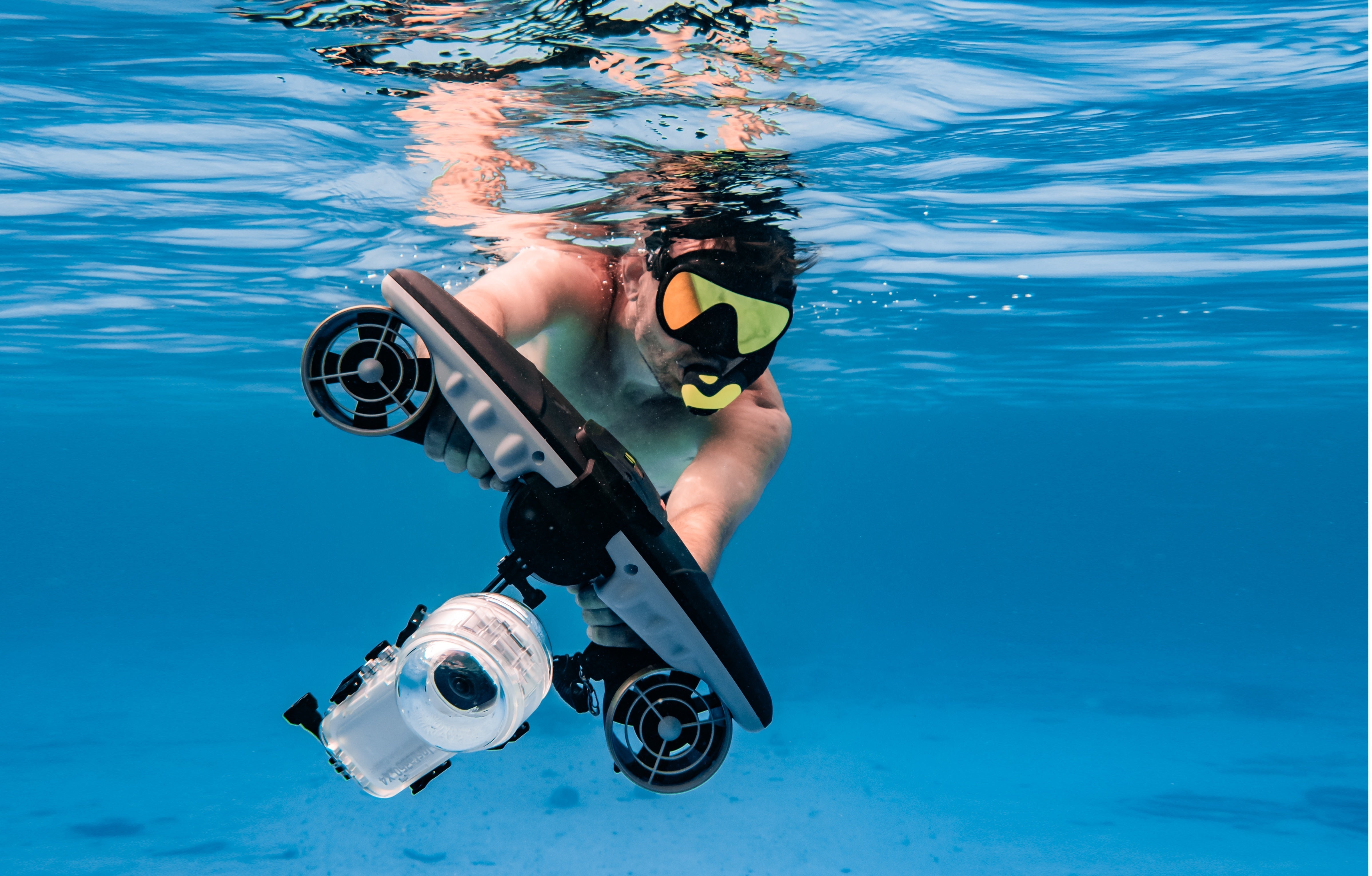






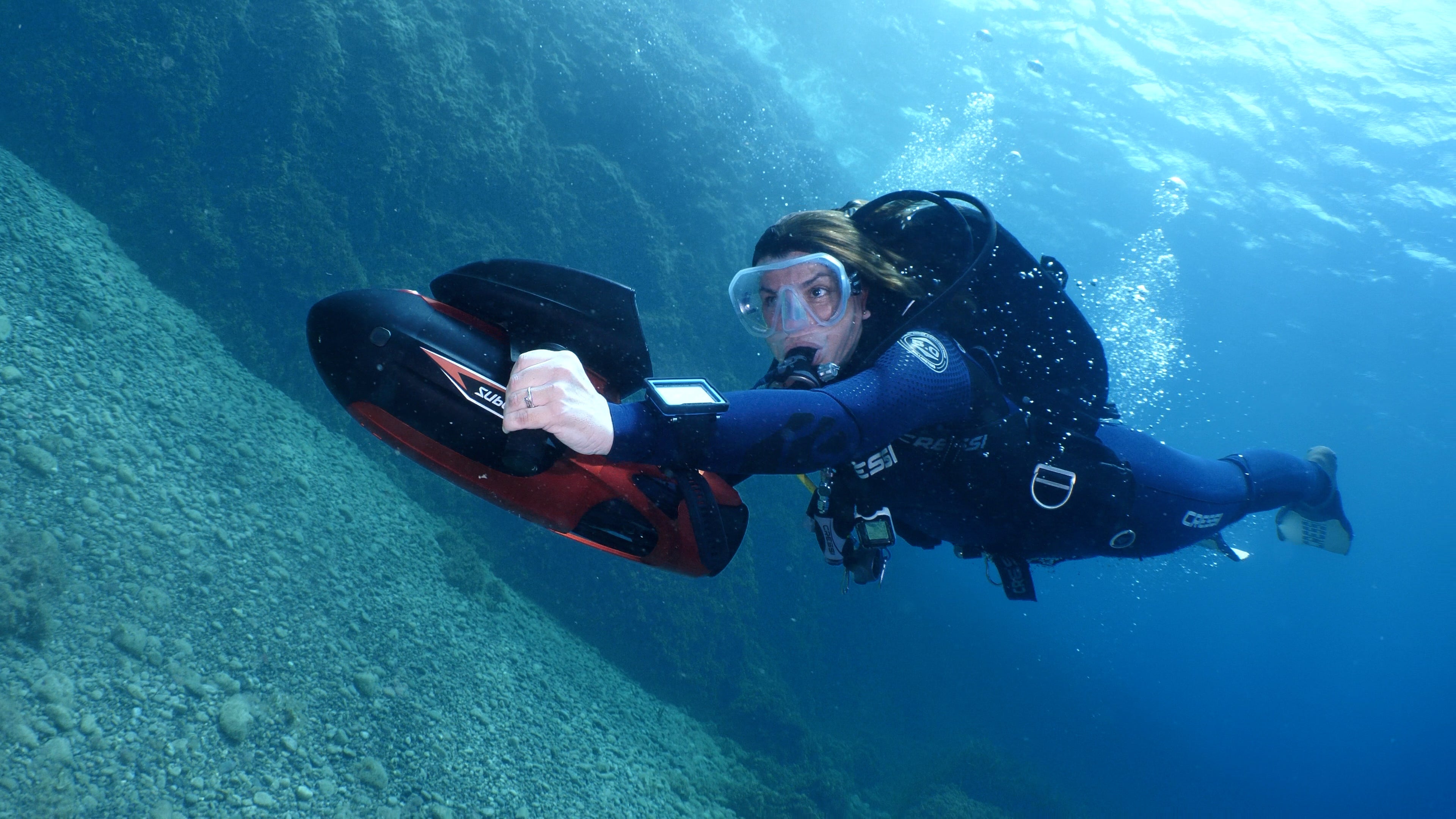
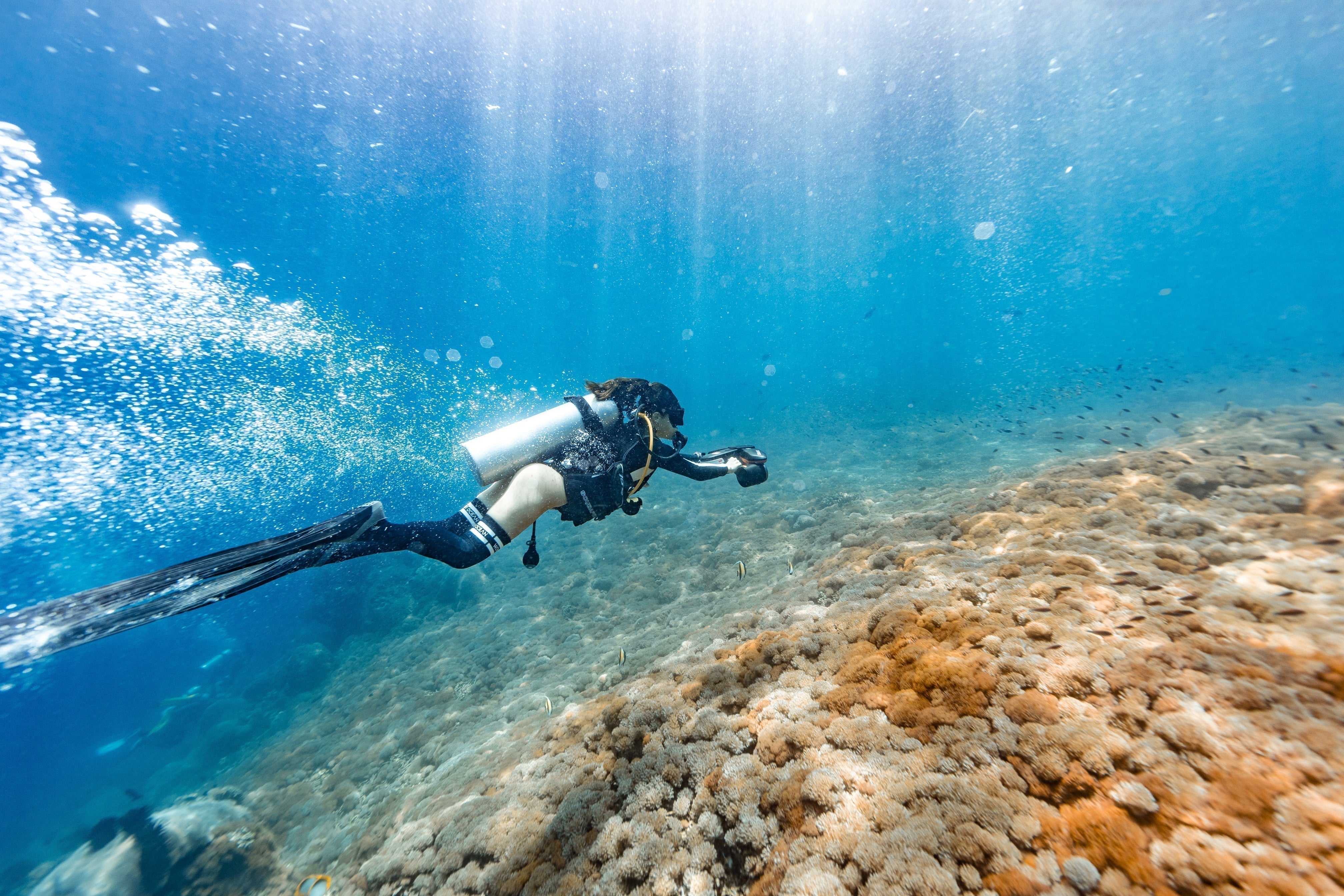
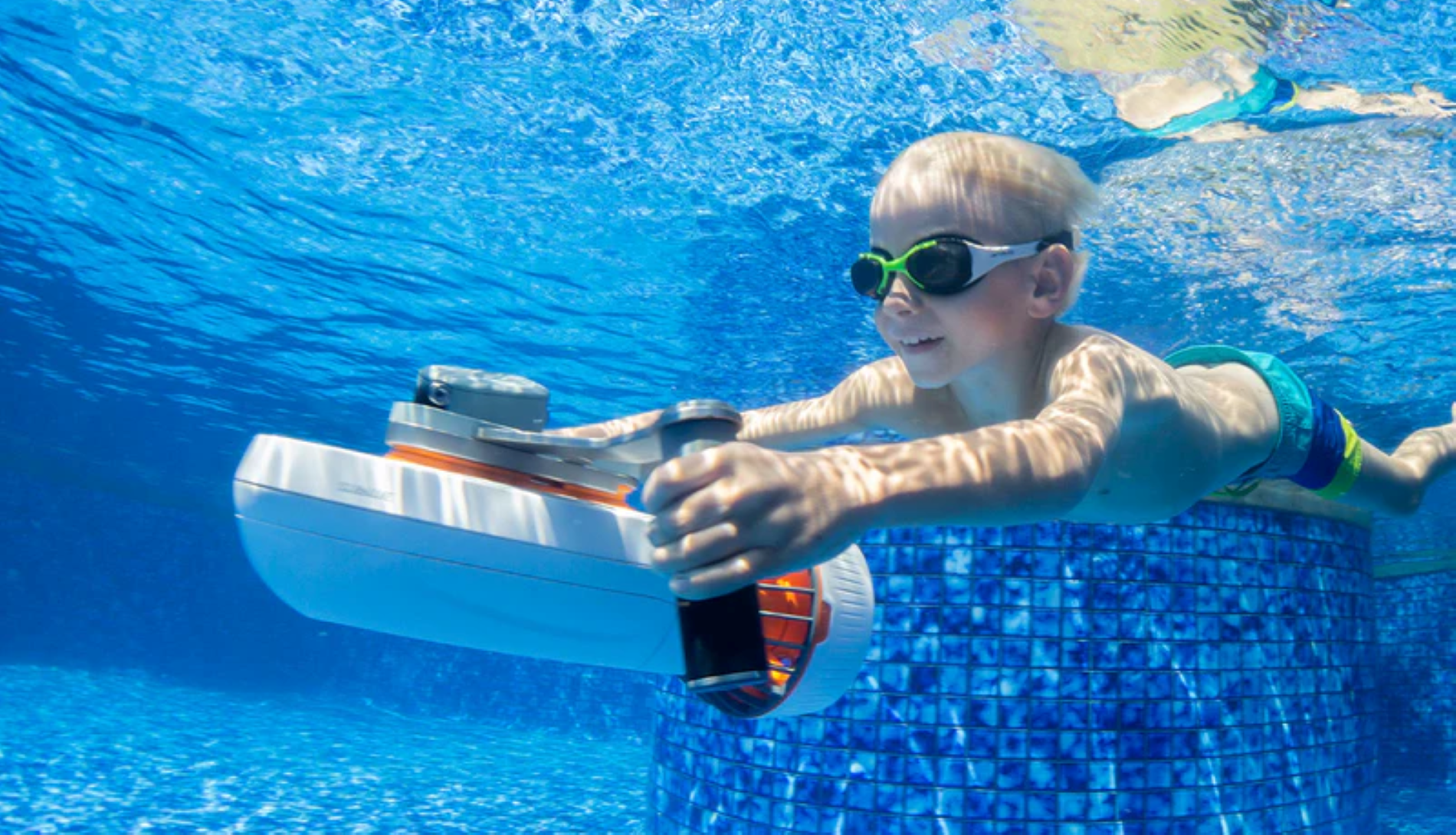
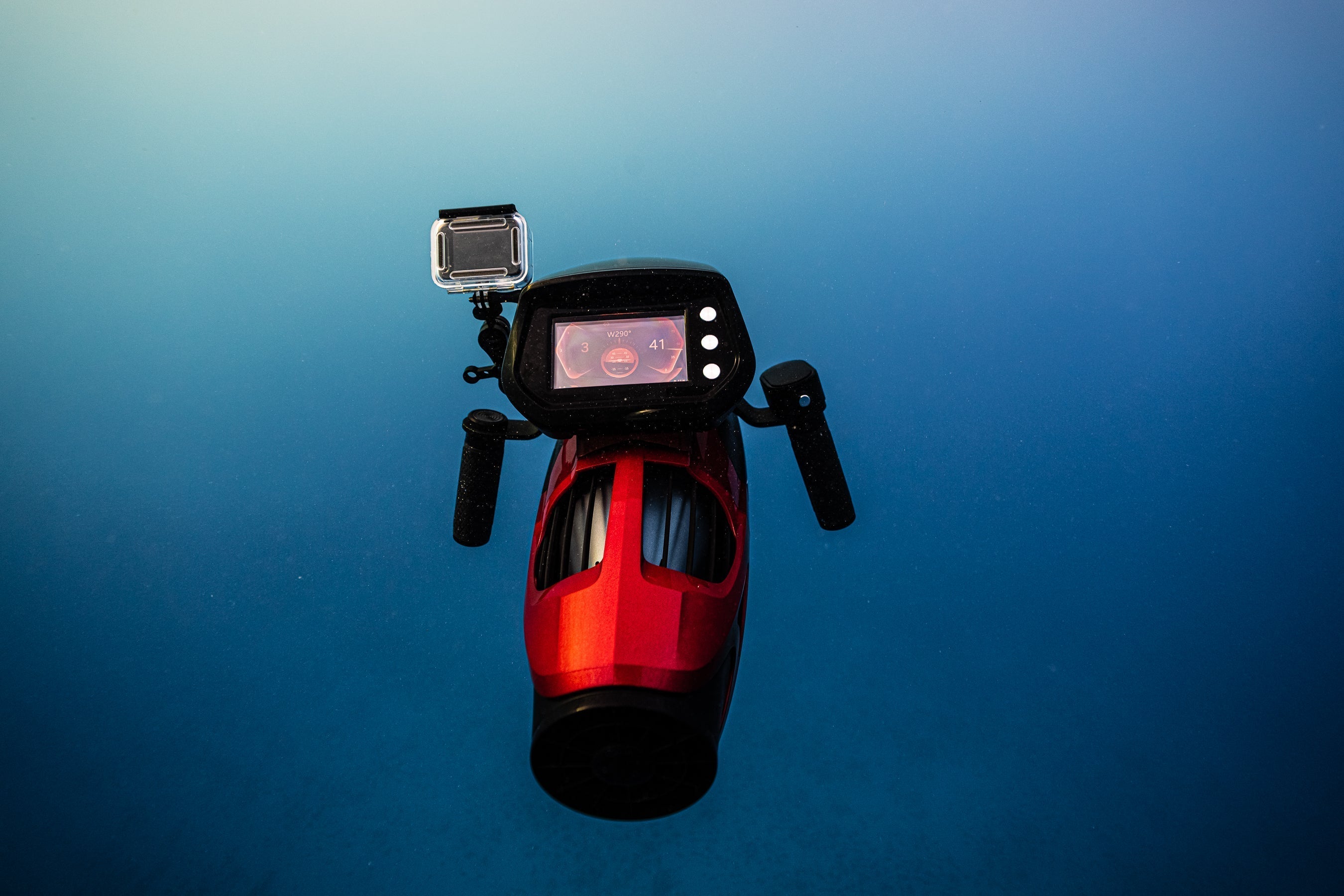
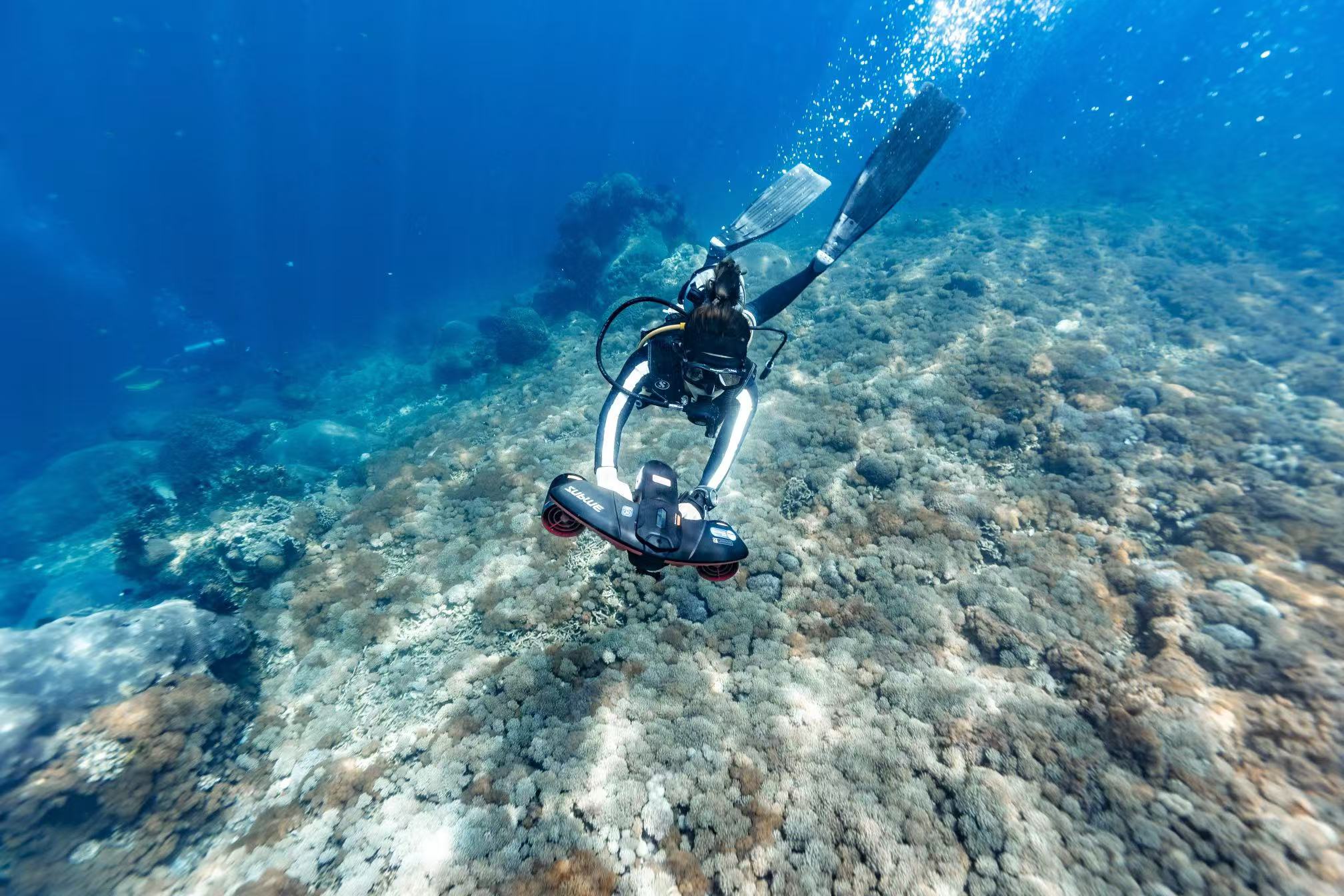
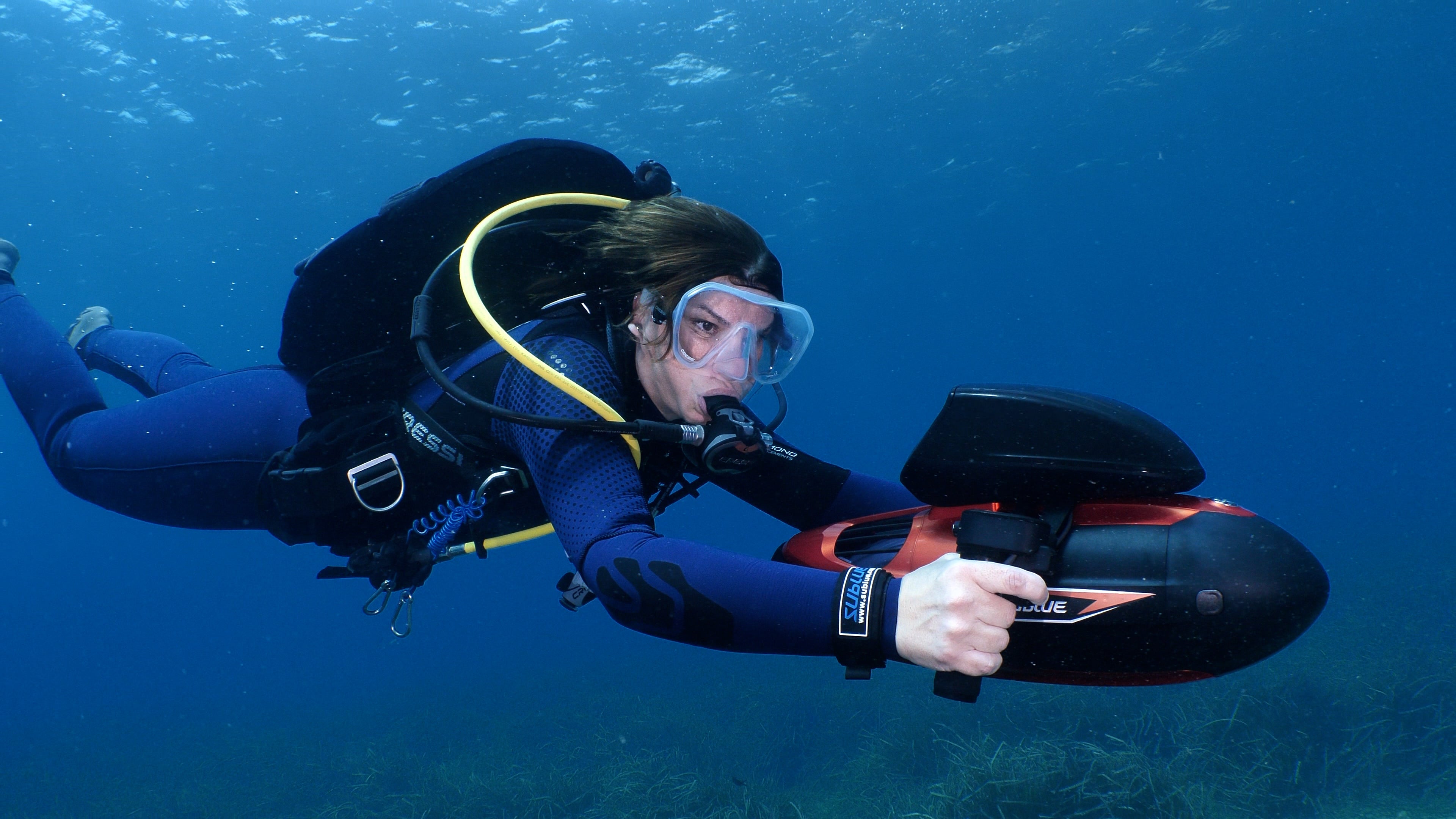
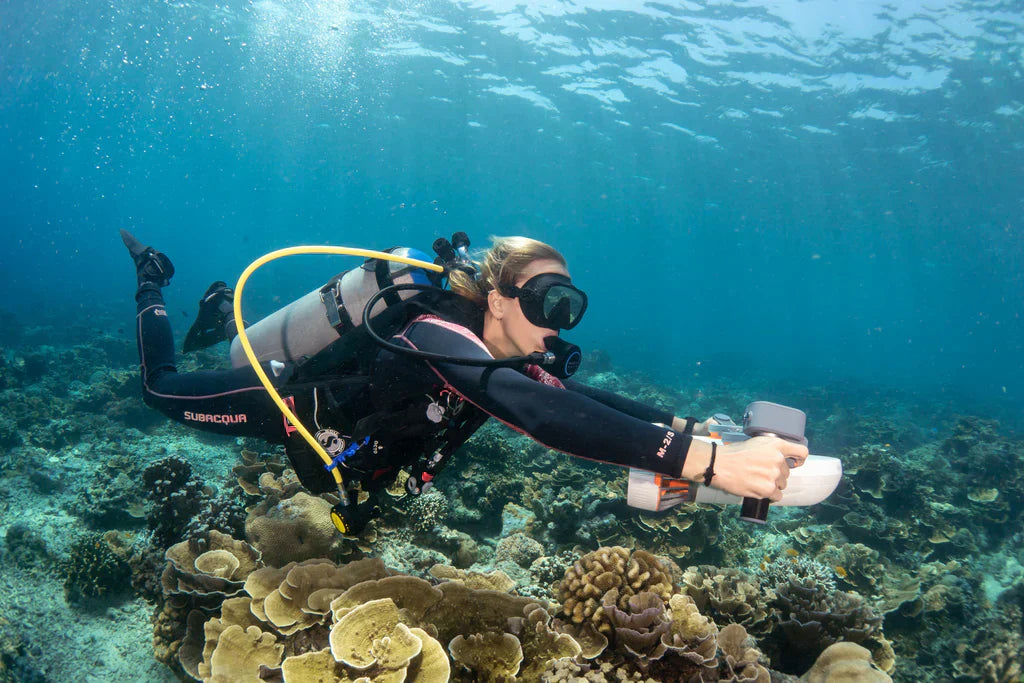
Condividi:
La Guida Professionale per Subacquei agli Scooter Subacquei: Prestazioni, Tecniche e Attrezzatura
La guida definitiva per equipaggiare il tuo yacht con gli ultimi giochi d'acqua indispensabili